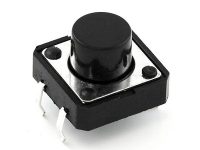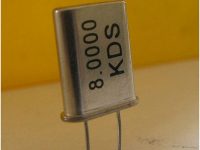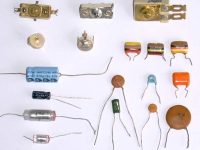RFID : Radio Frequency Identification
Contents
What is RFID or Radio Frequency Identification ? How it Works ?
 Radio Frequency Identification is a term that used to describe a wireless system that used for Automatic Identification and Tracking, it uses Radio Frequency electromagnetic fields to transfer data from tag attached to an object. Unlike UPC (Universal Product Code) Bar Code, this technology doesn’t need line of sight communication and it can be read through clothing, human body or any non metallic materials. Therefore it is an excellent replacement for UPC Bar Codes.
Radio Frequency Identification is a term that used to describe a wireless system that used for Automatic Identification and Tracking, it uses Radio Frequency electromagnetic fields to transfer data from tag attached to an object. Unlike UPC (Universal Product Code) Bar Code, this technology doesn’t need line of sight communication and it can be read through clothing, human body or any non metallic materials. Therefore it is an excellent replacement for UPC Bar Codes.
Components of RFID System
- Tag or Transponder : Tag electronically programmed with unique information
- Coil or Antenna : To emit radio signals to activate tag and/or read radio signals emitted by the tag.
- Transceiver
 RFID system operates by identifying, tags attached to objects to be identified. Reader or interrogator is a radio transmitter and receiver for sending out a signal that triggers the transponder (tag) and for reading its response. Readers then transmits their observations to an
RFID system operates by identifying, tags attached to objects to be identified. Reader or interrogator is a radio transmitter and receiver for sending out a signal that triggers the transponder (tag) and for reading its response. Readers then transmits their observations to an  embedded or a computer system for further processing.
embedded or a computer system for further processing.
The information contained in the Tag or Transponder is stored in a Non-Volatile Memory and it is a Radio Frequency (RF) transceiver. When a tag reader sends an encoded RF signal to trigger the tag, the tag responds by sending it’s Identification Information. This Identification Information may be production date, batch number, unique tag serial number or any other specific information.
Types
- Active
- Passive
- Battery assisted Passive (BAP)
An Active RFID tag has a battery and periodically transmits its Identification Signal. Battery  assisted Passive (BAP) also has a battery and it is only activated in the presence of a Reader. Passive RFID tag has no battery, it uses radio energy transmitted by the Reader as its energy source. It is very cheaper and smaller compared to others. Reader or Interrogator must be close enough to transfer sufficient energy to the tag.
assisted Passive (BAP) also has a battery and it is only activated in the presence of a Reader. Passive RFID tag has no battery, it uses radio energy transmitted by the Reader as its energy source. It is very cheaper and smaller compared to others. Reader or Interrogator must be close enough to transfer sufficient energy to the tag.
Tags may be either read only or may be read/write. Field Programmable tags may be write once and read many. These are available as blank, user can write the required data to it.
Working
Now onwards we will considering Passive RFID Tags for the sake of explanation. The RFID Reader Module generates and radiates RF Carrier Signals of a particular frequency (say 125KHz) through its coils. When a RFID Tag which is designed to operate at that frequency (125KHz) is brought in to this field, it will energized from it.

These tags have internal Rectifier and Filter to convert electromagnetic signals from the RFID Reader Module to DC Power required for its operation. It also gets its master clock from these RF waves. By changing the modulation current, tag will send back the information contained in the factory programmed memory array.

Applications
- It is used in Grocery stores to track every item.
- It can replace Bar Codes as it can be read if passed near a reader and even if it is covered by a non metallic object.
- Tags can be fixed to Books, Cars, Mobile Phones, Computer Equipments for tracking.
- Tags can be used for tracking of persons, goods or animals.
- It can be used for toll collection and other contact less payment systems.








plz i cant find coding on rfid